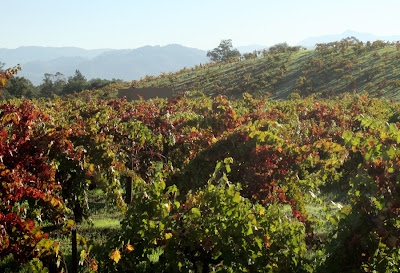Tasting different wines and listening to others talk about them is a great way to learn. Maybe you have a local wine shop that puts on tastings. This is cheaper and easier to learn than just buying random bottles when you want something for dinner that night.
But the best way is to have your own wine tastings. Gather up friends and/or coworkers once every month or two and have a wine tasting party. This can be as simple as everybody brings a bottle and you all try the different wines. Or it can be as difficult as the host puts on a dinner party with wines made to go with each course.
I'd suggest something in between.
- Figure out a theme for the tasting and there are plenty to choose from, such as "Unoaked Chardonnays," "Willamette Valley 2009 Pinot Noirs," or "2008 Burgundies under $40."
- Let one person be in charge of collecting the wines for the tasting. When you let everyone bring a bottle you may wind up with something really expensive next to a bottle someone just picked up at the grocery store and one bottle maybe too cold or too warm to show well. Usually about five to eight different wines is good for one tasting. You can squeeze 20 tastes out of one bottle so try to keep the attendance there or below.
- It's good to at least have water and neutral-tasting crackers available (nothing with too much salt) or bread. Be careful with cheese as it can change the taste of a wine significantly.
- Once the bottles are assembled just before the tasting begins have someone remove the corks and put the bottles in bags and number (1,2,3...) or letter (A, B, C...) them. Each taster should have a placemat with corresponding numbers or letters for each glass. Preparing the wine bottles this way is tasting them blind meaning you don't know what you've got and you won't be prejudiced.
- Pour the wines then taste and rank them. You can use a point system or just make "1" your favorite, "2" your second favorite, etc. At the end gather the scores and average them between the group then unveil the wines.
Some variations on the theme:
- Guess the varietal - Do a blind tasting of different varietals and see who can best guess which is Merlot, which Zinfandel, etc.
- Throw in one "ringer." That is if you're tasting "Russian River Pinots" put in one from Burgundy. Or if you're tasting "$50-up Bordeaux" put in a $20 one. If it's "$10 Chardonnays" put in a $40 one.
- Put in the same wine twice and see if both rank next to each other or not.
This is a great way to learn about wines.












